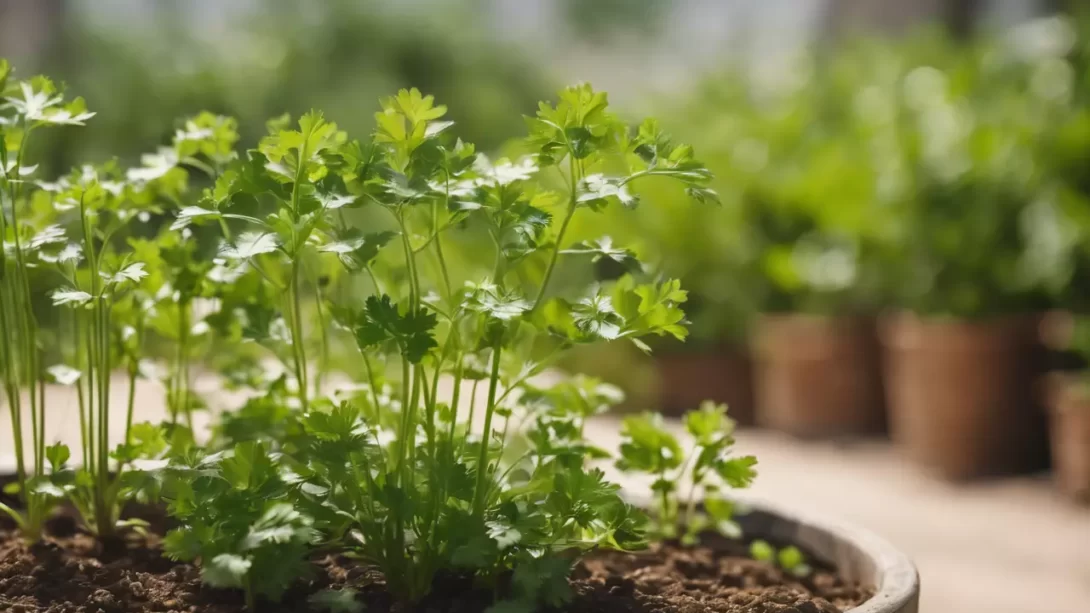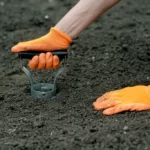Cilantro, a popular herb in many cuisines, is known for its tendency to bolt, or prematurely go to seed, especially in warm conditions. Bolting can cause cilantro leaves to become smaller, bitter, and less aromatic, making the herb less desirable for culinary use. Understanding how to prevent or delay bolting is essential for gardeners looking to enjoy a prolonged harvest of flavorful cilantro leaves.
- Seeds will arrive packed inside our one-of-a-kind Frozen Seed Capsules – an air/water-tight glass vial packed with organic cotton and moisture-absorbing silica beads. The perfect environment for long-term seed storage!
- Frozen Seed Capsules are designed as a time capsule for seeds. Store in the freezer to protect and preserve your seeds for many years of excellent germination rates. Seeds saved in a frozen environment can last for decades
- The screw-top lid provides an air/water-tight environment to keep seeds dry. The glass vial ensures protection for long-term storage and seeds are easily viewable, yet completely secure; no more flimsy envelopes! Organic cotton keeps seeds dry and comfortable and color-changing silica beads absorb moisture to prevent seed damage.
- Plant your seeds now or save seeds to grow year after year. Perfect for both the rare seeds collector and avid gardener, Frozen Seed Capsules make saving seeds easy and effective!
- FROZEN SEED CAPSULES make great gifts!
Bolting in Cilantro
Bolting is a natural part of a cilantro plant’s lifecycle, triggered primarily by longer daylight hours and rising temperatures. This process involves the plant shifting its energy from leaf production to flowering and seeding. Once cilantro bolts, the leaves lose their tender, flavorful quality. Factors like stress from inadequate watering or extreme temperature fluctuations can also contribute to bolting.
Choosing the Right Variety
Some cilantro varieties have been bred for slower bolting. Varieties such as ‘Slo-Bolt’, ‘Leisure’, and ‘Calypso’ are known for their bolt-resistant traits. Choosing a bolt-resistant variety is particularly important in regions with warmer climates or longer daylight hours. When selecting seeds or plants, consider your local climate and opt for varieties that are suited to your specific environmental conditions.
Optimal Planting Time
Timing is key to growing cilantro successfully:
- In Cooler Climates: Plant cilantro in the early spring, as soon as the soil can be worked. A fall planting is also feasible, as the cooler temperatures can delay bolting.
- In Warmer Regions: It’s best to plant cilantro in the late fall or early winter. In these climates, cilantro can grow through the winter and will bolt as the days get longer and warmer in spring.
Soil Preparation and Planting
Proper soil preparation can help prevent stress-induced bolting:
- Soil Type: Cilantro prefers well-draining soil rich in organic matter. Amend the soil with compost before planting to improve its quality.
- Planting Depth and Spacing: Sow seeds about 1/4 inch deep and space them 2 to 3 inches apart. Thinning the seedlings to 4-6 inches apart allows ample room for growth, reducing competition and stress.
- 🌳 SUPPORT YOUR INDOOR HERB’S GROWTH – Give your plants the nourishing environment it needs to thrive! This premixed, ready to use soil blend is made up of premium non-organic all-purpose soil.
- 🌳 FIT FOR ALL INDOOR HERB PLANT VARIETIES – Basil, Thyme, Rosemary, Oregano, Mint, Parsley, Sage. Our premium soil won’t disappoint. It maximizes fertilizer absorption and provides excellent aeration to the roots.
- 🌳 PROMOTES OPTIMUM DRAINAGE – Our soil mix holds an adequate amount of moisture to meet the plant’s needs, yet still allows the water to drain well. This helps prevent over-watering.
- 🌳 GET MORE FOR YOUR MONEY – With 2.2 quarts in every bag, our soil offers you great value compared to many other options on the market. It also comes in a sturdy, resealable bag.
- 🌳 BUY WITH CONFIDENCE – Our soil blend is MADE IN THE USA. If you are not satisfied with what you receive, let us know and we’ll arrange a refund or replacement immediately.
Providing Adequate Shade
In hot climates, providing shade can significantly delay the bolting process:
- Shade Structures: Use shade cloth or plant cilantro where it will receive afternoon shade, especially in the hotter months.
- Companion Planting: Plant cilantro near taller crops that can provide natural shade as the sun moves.
Regular Watering and Mulching
Consistent watering and mulching are crucial for keeping cilantro cool and hydrated:
- Watering Schedule: Water cilantro regularly to maintain evenly moist soil. Avoid overwatering or letting the soil dry out completely.
- Mulching: Apply a layer of organic mulch around the base of the cilantro plants. This helps retain soil moisture and keeps the roots cool.
Succession Planting
Succession planting ensures a continuous supply of cilantro:
- Planting Intervals: Sow new cilantro seeds every 2 to 3 weeks. This provides a steady supply as older plants begin to bolt.
- Rotating Areas: If possible, rotate the planting area to take advantage of varying light and temperature conditions throughout the season.
In conclusion, while cilantro’s tendency to bolt can be a challenge, understanding the plant’s growth patterns and environmental needs allows for successful cultivation. By selecting bolt-resistant varieties, timing your plantings, and employing strategies like adequate shading, regular watering, and succession planting, you can enjoy a longer and more bountiful cilantro harvest. Remember, gardening is a learning process, so don’t hesitate to try different techniques to see what works best in your unique growing conditions.
Harvesting Techniques
Effective harvesting can encourage cilantro to produce more leaves and delay bolting:
- Frequency: Regular harvesting stimulates leaf production. Gently harvest cilantro leaves at least once a week.
- Method: Cut the outer leaves first, leaving the central growing point intact to continue producing new leaves. Harvest the leaves early in the morning when their oil content, and thus flavor, is highest.
Managing Temperature and Light
In warmer climates, managing temperature and light is crucial:
- Cooling Measures: Use water-efficient methods like drip irrigation to keep the soil cool. Watering in the early morning or late evening can also help reduce heat stress.
- Light Control: While cilantro needs full sun to part shade, in very hot climates, provide light shade during the hottest part of the day to protect the plants.
Recognizing and Utilizing Bolted Cilantro
Even with the best care, cilantro will eventually bolt, which isn’t necessarily a bad thing:
- Recognition: Once cilantro bolts, you’ll notice the stems elongate and flowers begin to form. At this stage, the flavor of the leaves changes and becomes less desirable for some culinary uses.
- Uses: Bolted cilantro produces coriander seeds, which are a spice used in various dishes. Allow the flowers to turn into seed pods, then harvest the seeds once they turn brown.
Common Mistakes to Avoid
Steer clear of these common mistakes when growing cilantro:
- Overcrowding: Planting cilantro too densely can cause stress and promote bolting. Ensure adequate space between plants.
- Irregular Watering: Allowing the soil to dry out completely between watering sessions can stress the plant and trigger bolting.
- Ignoring the Harvest: Failing to regularly harvest cilantro can lead it to bolt sooner. Consistent harvesting encourages new growth.
Conclusion
Growing cilantro successfully requires understanding its growth habits and responding to its needs, especially in warm climates. By implementing strategies such as choosing the right variety, timing your planting, providing shade, managing water and temperature, and practicing regular harvesting, you can significantly delay bolting. Embrace the entire lifecycle of cilantro, from leaf to seed, and enjoy the diverse flavors it brings to your kitchen. Remember, gardening is as much about the journey as it is about the harvest, so enjoy the process and learn from each growing season.





